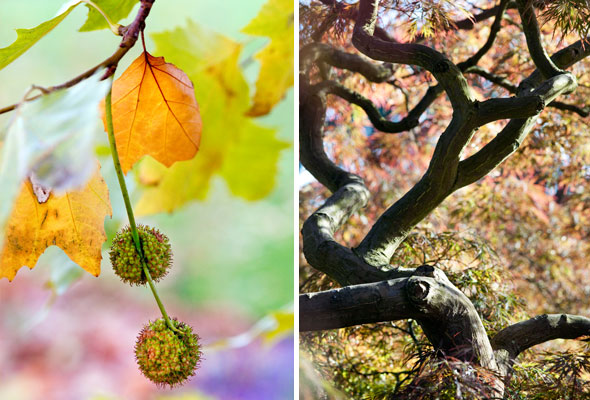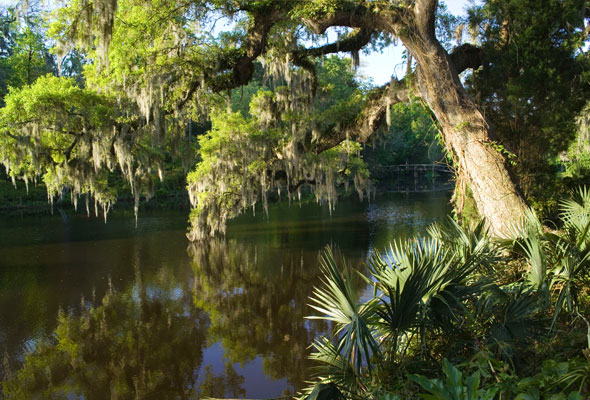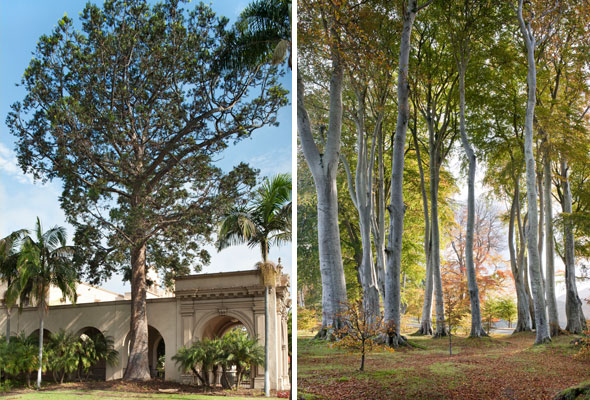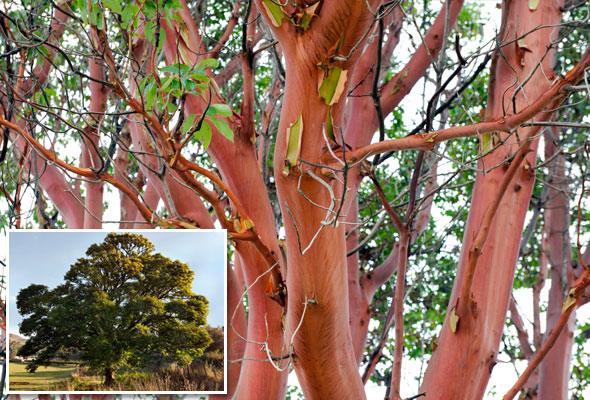Pillars of life
 Left: Planes (Platanus orientalis) are large deciduous trees with a long history of human appreciation and can be as old as 2,000 years. They originate in the Balkans. Right: Japanese maple (Acer palmatum) is a small, deciduous tree grown for its graceful habit and autumn colour
Left: Planes (Platanus orientalis) are large deciduous trees with a long history of human appreciation and can be as old as 2,000 years. They originate in the Balkans. Right: Japanese maple (Acer palmatum) is a small, deciduous tree grown for its graceful habit and autumn colour Southern live oak (Quercus virginiana) is a large evergreen originating in the eastern United States. Its timber is so dense that it can stop bullets and cannonballs, making it a favourite with 19th-century naval engineers
Southern live oak (Quercus virginiana) is a large evergreen originating in the eastern United States. Its timber is so dense that it can stop bullets and cannonballs, making it a favourite with 19th-century naval engineersTrees are an essential part of our sense of place, whether rural or urban, traditional or contemporary. Urban trees are particularly important; they have rarity value, and serve as poignant reminders of the wider natural world. It is no surprise that determined campaigns erupt when urban trees are threatened by developers or disease. We relate to trees very much as individuals; despite their size and form, they seem to have almost human characteristics, which gives all the more reason to defend them when they are threatened. In nature, trees grow alone only rarely. They are collective beings, the constituents of woods and forests, and we only really understand them if we see them as parts of a whole. Yet to fully appreciate their beauty, their majesty and in some cases their great size or immense age, we need to see them on their own, in splendid isolation. In her photography, Andrea Jones captures trees as individuals, with close-up details of their growth. Understanding trees, after all, is an essential part of our learning to be good stewards of the Earth.
 Left: Kauri (Agathis australis), an evergreen conifer, originates in New Zealand. Right: The European beech (Fagus sylvatica) is of great landscape, ecological and economic value, as its wood is hard-wearing but easy to work with
Left: Kauri (Agathis australis), an evergreen conifer, originates in New Zealand. Right: The European beech (Fagus sylvatica) is of great landscape, ecological and economic value, as its wood is hard-wearing but easy to work with Madrone (Arbutus menziesii) is an evergreen tree with smooth cinnamon-brown bark and glossy dark green leaves from coastal western North America. Inset: Sycamore (Acer pseudoplatanus) can be found in continental Europe and was introduced to Britain in the 16th century, where it has flourished
Madrone (Arbutus menziesii) is an evergreen tree with smooth cinnamon-brown bark and glossy dark green leaves from coastal western North America. Inset: Sycamore (Acer pseudoplatanus) can be found in continental Europe and was introduced to Britain in the 16th century, where it has flourishedThe Splendour Of The Tree, by Noel Kingsbury; photography by Andrea Jones (Frances Lincoln, £25).



